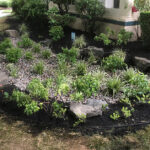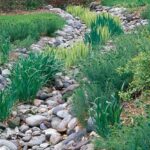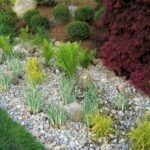Rain gardens are a beautiful and environmentally friendly way to manage stormwater runoff on your property. By capturing and absorbing rainwater, these gardens help prevent erosion, filter pollutants, and recharge groundwater. Designing a rain garden requires careful planning to ensure that it is both functional and aesthetically pleasing.
The first step in designing a rain garden is to determine the location. Ideally, a rain garden should be situated in a low-lying area where water naturally collects during rainfall. It should also be at least 10 feet away from the house to prevent water from seeping into the foundation. The size of the rain garden will depend on the amount of water it needs to capture, which can be calculated based on the size of the contributing impervious surfaces.
Once the location and size of the rain garden have been determined, the next step is to choose the right plants. Native plants are ideal for rain gardens because they are adapted to the local climate and soil conditions. They also require less water and maintenance than non-native plants. Grasses, shrubs, and perennial flowers are all good choices for a rain garden, as they have deep roots that help absorb water and prevent erosion.
When designing a rain garden, it is important to create a diverse range of plant species to provide habitat for wildlife and improve biodiversity. Grouping plants with similar water and sunlight requirements together will help them thrive and create a cohesive, visually appealing design. Adding mulch around the plants can help retain moisture and reduce weed growth.
In order to ensure that the rain garden effectively captures and filters stormwater runoff, it is important to create a berm or swale around the garden to direct water flow into the garden. The soil in the rain garden should be a mix of sand, silt, and clay to promote infiltration and prevent erosion. Adding a layer of gravel or rocks at the bottom of the rain garden can also help with drainage and prevent water from pooling.
Overall, designing a rain garden requires careful consideration of location, size, plant selection, and drainage. By following these guidelines, you can create a beautiful and functional rain garden that not only enhances the aesthetic appeal of your property but also helps protect the environment and manage stormwater runoff effectively.










